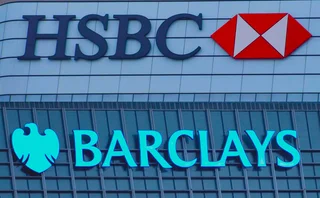
Time for transparency

The storm at China Aviation Oil (CAO) rumbles on, four months after the Singaporelisted firm – supplier of most of China’s jet fuel imports – revealed it had lost $550 million in oil derivatives trading. In the latest instalment, CAO filed a suit with the Singapore High Court in March alleging that a restructuring of its options portfolio by Goldman Sachs in January and June last year actually amplified the company’s losses. Goldman, the firm alleges in an affidavit, failed to properly explain the risks posed by the restructuring, and in particular the use of extendible collars, resulting in enhanced market risk in the firm’s options book.
Whether the case has any merits or, as some bankers privately suggest, the lawsuit is merely posturing by CAO in the face of court proceedings from its own creditors is not yet clear (see page 11). However, the latest chapter once again highlights the lack of transparency around the CAO’s losses. Only sketchy details of its trading positions and the subsequent restructurings have emerged through court documents and, more recently, through consultants PricewaterhouseCoopers (PwC), whose investigation into the circumstances leading up to the losses was publicly released by CAO just as Risk was going to press. However, little has been said about the role played by CAO’s senior management or its parent company, the Chinese government-owned China Aviation Oil Holdings Company (CAOHC).
Compare that with the A$360 million forex options losses at National Australia Bank last year. Within three months, the Australian bank had published in full an investigation by PwC into the rogue trading scandal, as well as a separate report by the country’s banking regulator, the Australian Prudential Regulation Authority. The chairman and chief executive both stood down, and four of the bank’s former forex options traders are now facing criminal convictions (see page 9).
In the case of CAO, the PwC report highlights catastrophic failures in risk management policies and procedures, including the use of an incorrect valuation methodology for the mark-to-market calculation of its options portfolio. But little has been said about what is potentially the most damaging aspect of the case – the role played by CAOHC.
According to an affidavit filed by CAO chief executive Chen Jiulin last November, the parent company knew of the losses in October 2004 and sold $118 million worth of its CAO stock to institutional investors to raise money for the CAO’s margin payments. If true, that’s a pretty clear example of insider trading. Yet four months on, virtually nothing has been done – publicly at least – about Chen’s allegations, despite an initial pledge by the Singapore authorities to leave no stone unturned in its investigations.
China represents a huge opportunity for foreign firms, and it’s understandable that no-one wants to rock the boat. However, Chinese firms need to improve transparency, risk management and disclosure, and a good way to start is for the investigation into CAO to be made more transparent and for state-owned COAHC’s role in the share placement to be questioned.
Only users who have a paid subscription or are part of a corporate subscription are able to print or copy content.
To access these options, along with all other subscription benefits, please contact info@risk.net or view our subscription options here: http://subscriptions.risk.net/subscribe
You are currently unable to print this content. Please contact info@risk.net to find out more.
You are currently unable to copy this content. Please contact info@risk.net to find out more.
Copyright Infopro Digital Limited. All rights reserved.
As outlined in our terms and conditions, https://www.infopro-digital.com/terms-and-conditions/subscriptions/ (point 2.4), printing is limited to a single copy.
If you would like to purchase additional rights please email info@risk.net
Copyright Infopro Digital Limited. All rights reserved.
You may share this content using our article tools. As outlined in our terms and conditions, https://www.infopro-digital.com/terms-and-conditions/subscriptions/ (clause 2.4), an Authorised User may only make one copy of the materials for their own personal use. You must also comply with the restrictions in clause 2.5.
If you would like to purchase additional rights please email info@risk.net
More on Regulation
Critics warn against softening risk transfer rules for insurers
Proposal to cut capital for unfunded protection of loan books would create systemic risk, investors say
Barr defends easing of Basel III endgame proposal
Fed’s top regulator says he will stay and finish the package, is comfortable with capital impact
Bank of England to review UK clearing rules
Broader collateral set and greater margin transparency could be adopted from Emir 3.0, but not active accounts requirement
The wisdom of Oz? Why Australia is phasing out AT1s
Analysts think Australian banks will transition smoothly, but other countries unlikely to follow
EU trade repository matching disrupted by Emir overhaul
Some say problem affecting derivatives reporting has been resolved, but others find it persists
Barclays and HSBC opt for FRTB internal models
However, UK pair unlikely to chase approval in time for Basel III go-live in January 2026
Foreign banks want level playing field in US Basel III redraft
IHCs say capital charges for op risk and inter-affiliate trades out of line with US-based peers
CFTC’s Mersinger wants new rules for vertical silos
Republican commissioner shares Democrats’ concerns about combined FCMs and clearing houses







